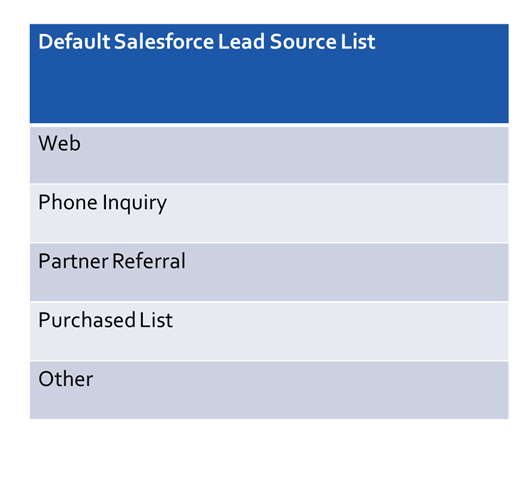How to supercharge the Salesforce lead source field
Strategic management of the lead source field within Salesforce setup will unlock the magic of campaign tracking and measure the efforts of your paid media and content efforts. Here's how.

Salesforce lead source has long been the data point that has ruled measurement of marketing initiatives. This field tracks channel attribution and is used to measure return on marketing investments.
However, in today’s marketplace, the field is very limited out of the box. Absent multitouch attribution flexibility, you really only get one lead source on a record within the database. But what about second, third and fourth touches?
There are a few options utilizing just lead source on its own, but they all have limitations:
- We can ignore all touches after the first and stick to the original source only. This is often the method we see used at most companies, and it leads to inaccurate data
- The second option is to override the existing lead source with each new touch. This leaves you with the most recent lead source only. Unfortunately, this destroys info and creates inaccurate data, leading to really scary decision-making.
- The last option is to create a new lead record for each touch. This approach is the most disruptive, leading to mass confusion and degraded data quality.
So, how do we measure the big picture of a combination of channel influence and maintain the integrity of the database? The answer is to use campaign tracking alongside a customized lead source architecture.
In this post, we’ll focus on how to get your lead source field customized with a level of granularity that serves the business while maintaining the integrity of the data.
Lead source field review
Out of the box, the default lead source list in Salesforce is not granular enough. This list predates most of the channels we utilize in marketing today — rolling all digital channel activity into one bucket labeled “web.”
Neglecting to customize this list during a Salesforce implementation leads to pandemonium and frustration once data begins to populate the reports, and marketing can’t see the results of their efforts clearly enough. Which then leads to shooting in the dark and misalignment between sales and marketing.
We highly recommend you perform an audit of your lead source field options and customize them for your organization. Get rid of lead sources that don’t serve you and add lead sources you would like to track. This can easily be done with a simple spreadsheet to allow everyone to come together and agree on what level of granularity you would like to see.
Customize Salesforce lead source
Once you have gone through your existing lead source list and pruned the lead sources that don’t belong, you can draft the new lead sources that should be added. Now, it’s time to go through and look for missing granularity and opportunity to consolidate.
Effective marketers and data folks always want things tracked as granularly as possible. This often leads to a new lead source for every single activity, event and campaign, which creates a bloated database and makes for difficult reporting.
You’ll likely find that you have several lead sources that can be combined or eliminated. Look for opportunities to standardize your lead sources similar to Google Analytics parameters. If you need additional details, add more fields.
Standardize data entry
Once things are cleaned up, we highly recommend you standardize and automate your data entry. The lead source field should be locked down and set automatically by the system, not by human hands. You can do this using a web-to-lead form (first touch email acquisition) or by passing data from your marketing automation tool (first touch visit).
Once the data is set, don’t allow it to change or allow it to map to other objects.
Strategic management of the lead source field within your Salesforce setup will allow you to unlock the magic of campaign tracking and really measure the efforts of your paid media campaigns and content efforts.
Contributing authors are invited to create content for MarTech and are chosen for their expertise and contribution to the martech community. Our contributors work under the oversight of the editorial staff and contributions are checked for quality and relevance to our readers. The opinions they express are their own.
Related stories



